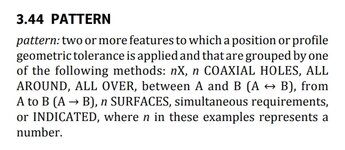Hi,
I have read some post but I didn't fin a clear answer for this question. When you have a drawing with datums defined, and a general note saying "Unless otherwise specified profile tolerance of: "
What is the difference between having that surface profile called out back to datums or called out to no datums?
Besides having those surfaces better controlled, is there any other reason?
Thanks
I have read some post but I didn't fin a clear answer for this question. When you have a drawing with datums defined, and a general note saying "Unless otherwise specified profile tolerance of: "
What is the difference between having that surface profile called out back to datums or called out to no datums?
Besides having those surfaces better controlled, is there any other reason?
Thanks

